熱點(diǎn)技術(shù):React性能優(yōu)化總結(jié)
初學(xué)者對(duì)React可能滿懷期待,覺(jué)得React可能完爆其它一切框架,甚至不切實(shí)際地認(rèn)為React可能連原生的渲染都能完爆——對(duì)框架的狂熱確實(shí)會(huì)出現(xiàn)這樣的不切實(shí)際的期待。讓我們來(lái)看看React的官方是怎么說(shuō)的。React官方文檔在Advanced Performanec這一節(jié),這樣寫(xiě)道:
- One of the first questions people ask when considering React for a project is whether their application will be as fast and responsive as an equivalent non-React version
顯然React自己也其實(shí)只是想盡量達(dá)到跟非React版本相若的性能,
你所不知道的render
react的組件渲染分為初始化渲染和更新渲染。在初始化渲染的時(shí)候會(huì)調(diào)用根組件下的所有組件的render方法進(jìn)行渲染,如下圖(綠色表示已渲染,這一層是沒(méi)有問(wèn)題的):

但是當(dāng)我們要更新某個(gè)子組件的時(shí)候,如下圖的綠色組件(從根組件傳遞下來(lái)應(yīng)用在綠色組件上的數(shù)據(jù)發(fā)生改變):

我們的理想狀態(tài)是只調(diào)用關(guān)鍵路徑上組件的render,如下圖:

但是react的默認(rèn)做法是調(diào)用所有組件的render,再對(duì)生成的虛擬DOM進(jìn)行對(duì)比,如不變則不進(jìn)行更新。這樣的render和虛擬DOM的對(duì)比明顯是在浪費(fèi),如下圖(黃色表示浪費(fèi)的render和虛擬DOM對(duì)比)
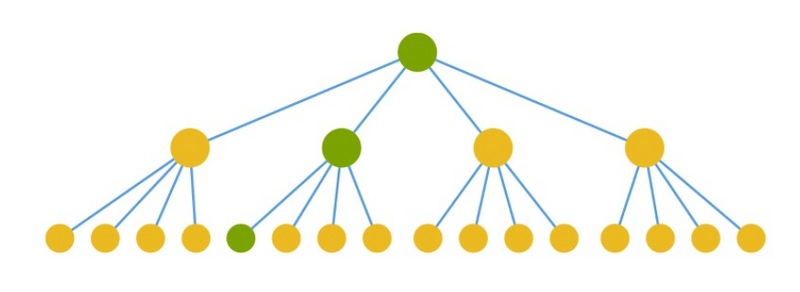
Tips:
拆分組件是有利于復(fù)用和組件優(yōu)化的。
生成虛擬DOM并進(jìn)行比對(duì)發(fā)生在render()后,而不是render()前。
更新階段的生命周期
-
componentWillReceiveProps(object nextProps):當(dāng)掛載的組件接收到新的props時(shí)被調(diào)用。此方法應(yīng)該被用于比較this.props 和 nextProps以用于使用this.setState()執(zhí)行狀態(tài)轉(zhuǎn)換。(組件內(nèi)部數(shù)據(jù)有變化,使用state,但是在更新階段又要在props改變的時(shí)候改變state,則在這個(gè)生命周期里面) -
shouldComponentUpdate(object nextProps, object nextState): -boolean 當(dāng)組件決定任何改變是否要更新到DOM時(shí)被調(diào)用。作為一個(gè)優(yōu)化實(shí)現(xiàn)比較this.props 和 nextProps 、this.state 和 nextState ,如果React應(yīng)該跳過(guò)更新,返回false。 -
componentWillUpdate(object nextProps, object nextState):在更新發(fā)生前被立即調(diào)用。你不能在此調(diào)用this.setState()。 -
componentDidUpdate(object prevProps, object prevState): 在更新發(fā)生后被立即調(diào)用。(可以在DOM更新完之后,做一些收尾的工作)
Tips:
React的優(yōu)化是基于
shouldComponentUpdate的,該生命周期默認(rèn)返回true,所以一旦prop或state有任何變化,都會(huì)引起重新render。
shouldComponentUpdate
react在每個(gè)組件生命周期更新的時(shí)候都會(huì)調(diào)用一個(gè)shouldComponentUpdate(nextProps, nextState)函數(shù)。它的職責(zé)就是返回true或false,true表示需要更新,false表示不需要,默認(rèn)返回為true,即便你沒(méi)有顯示地定義 shouldComponentUpdate 函數(shù)。這就不難解釋上面發(fā)生的資源浪費(fèi)了。
為了進(jìn)一步說(shuō)明問(wèn)題,我們?cè)僖靡粡埞倬W(wǎng)的圖來(lái)解釋,如下圖( SCU表示shouldComponentUpdate,綠色表示返回true(需要更新),紅色表示返回false(不需要更新);vDOMEq表示虛擬DOM比對(duì),綠色表示一致(不需要更新),紅色表示發(fā)生改變(需要更新)):
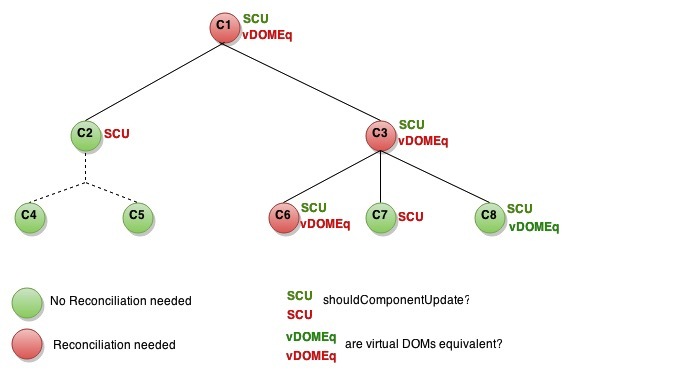
根據(jù)渲染流程,首先會(huì)判斷shouldComponentUpdate(SCU)是否需要更新。如果需要更新,則調(diào)用組件的render生成新的虛擬DOM,然后再與舊的虛擬DOM對(duì)比(vDOMEq),如果對(duì)比一致就不更新,如果對(duì)比不同,則根據(jù)最小粒度改變?nèi)ジ翫OM;如果SCU不需要更新,則直接保持不變,同時(shí)其子元素也保持不變。
-
C1根節(jié)點(diǎn),綠色SCU (true),表示需要更新,然后vDOMEq紅色,表示虛擬DOM不一致,需要更新。
-
C2節(jié)點(diǎn),紅色SCU (false),表示不需要更新,所以C4,C5均不再進(jìn)行檢查
-
C3節(jié)點(diǎn)同C1,需要更新
-
C6節(jié)點(diǎn),綠色SCU (true),表示需要更新,然后vDOMEq紅色,表示虛擬DOM不一致,更新DOM。
-
C7節(jié)點(diǎn)同C2
-
C8節(jié)點(diǎn),綠色SCU (true),表示需要更新,然后vDOMEq綠色,表示虛擬DOM一致,不更新DOM。
帶坑的寫(xiě)法:
-
{…this.props} (不要濫用,請(qǐng)只傳遞component需要的props,傳得太多,或者層次傳得太深,都會(huì)加重shouldComponentUpdate里面的數(shù)據(jù)比較負(fù)擔(dān),因此,也請(qǐng)慎用spread attributes(<Component {…props} />))。
-
::this.handleChange()。(請(qǐng)將方法的bind一律置于constructor)
-
this.handleChange.bind(this,id)
-
復(fù)雜的頁(yè)面不要在一個(gè)組件里面寫(xiě)完。
-
請(qǐng)盡量使用const element。
-
map里面添加key,并且key不要使用index(可變的)。具體可參考使用Perf工具研究React Key對(duì)渲染的影響
-
盡量少用setTimeOut或不可控的refs、DOM操作。
-
數(shù)據(jù)盡可能簡(jiǎn)單明了,扁平化。
性能檢測(cè)工具
React官方提供的:React.addons.Perf
react官方提供一個(gè)插件React.addons.Perf可以幫助我們分析組件的性能,以確定是否需要優(yōu)化。
打開(kāi)console面板,先輸入Perf.start()執(zhí)行一些組件操作,引起數(shù)據(jù)變動(dòng),組件更新,然后輸入Perf.stop()。(建議一次只執(zhí)行一個(gè)操作,好進(jìn)行分析)
再輸入Perf.printInclusive查看所有涉及到的組件render,如下圖(官方圖片):
![]()
或者輸入Perf.printWasted()查看下不需要的的浪費(fèi)組件render,如下圖(官方圖片):

優(yōu)化前:

優(yōu)化后:
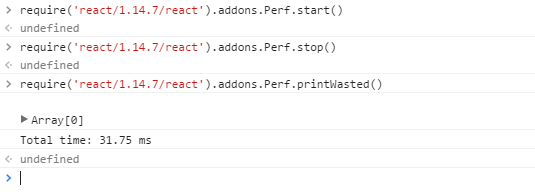
其他的檢測(cè)工具
react-perf-tool為React應(yīng)用提供了一種可視化的性能檢測(cè)方案,該工程同樣是基于React.addons,但是使用圖表來(lái)顯示結(jié)果,更加方便。
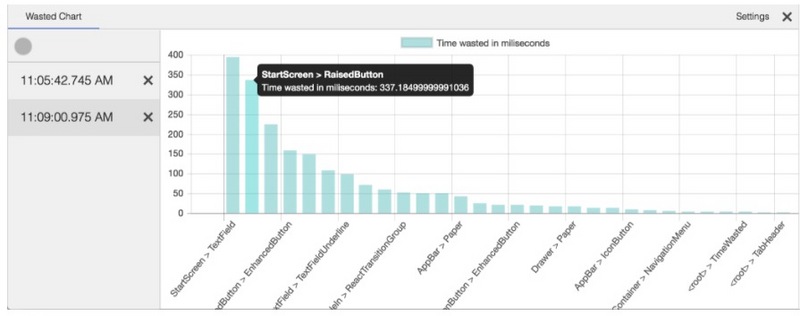
React官方的解決方案
PureRenderMixin(es5)
- var PureRenderMixin = require('react-addons-pure-render-mixin');
- React.createClass({
- mixins: [PureRenderMixin],
- render: function() {
- return <div className={this.props.className}>foo</div>;
- }
- });
Shallow Compare (es6)
- var shallowCompare = require('react-addons-shallow-compare');
- export class SampleComponent extends React.Component {
- shouldComponentUpdate(nextProps, nextState) {
- return shallowCompare(this, nextProps, nextState);
- }
- render() {
- return <div className={this.props.className}>foo</div>;
- }
- }
es7裝飾器的寫(xiě)法:
- import pureRender from "pure-render-decorator" ... @pureRender class Person extends Component { render() { console.log("我re-render了"); const {name,age} = this.props; return ( <div> <span>姓名:</span> <span>{name}</span> <span> age:</span> <span>{age}</span> </div>
- )
- }
- }
pureRender很簡(jiǎn)單,就是把傳進(jìn)來(lái)的component的shouldComponentUpdate給重寫(xiě)掉了,原來(lái)的shouldComponentUpdate,無(wú)論怎樣都是return ture,現(xiàn)在不了,我要用shallowCompare比一比,shallowCompare代碼及其簡(jiǎn)單,如下:
- function shallowCompare(instance, nextProps, nextState) {
- return !shallowEqual(instance.props, nextProps) || !shallowEqual(instance.state, nextState);
- }
缺點(diǎn)
shallowEqual其實(shí)只比較props的第一層子屬性是不是相同,就像上述代碼,props 是如下
- {
- detail: {
- name: "123", age: "123"
- }
- }
他只會(huì)比較props.detail ===nextProps.detail,導(dǎo)致在傳入復(fù)雜的數(shù)據(jù)的情況下,優(yōu)化失效。
immutable.js
我們也可以在 shouldComponentUpdate() 中使用使用 deepCopy 和 deepCompare 來(lái)避免無(wú)必要的 render(),但 deepCopy 和 deepCompare 一般都是非常耗性能的。
Immutable Data 就是一旦創(chuàng)建,就不能再被更改的數(shù)據(jù)。對(duì) Immutable 對(duì)象的任何修改或添加刪除操作都會(huì)返回一個(gè)新的 Immutable 對(duì)象。
Immutable 實(shí)現(xiàn)的原理是 Persistent Data Structure(持久化數(shù)據(jù)結(jié)構(gòu)),也就是使用舊數(shù)據(jù)創(chuàng)建新數(shù)據(jù)時(shí),要保證舊數(shù)據(jù)同時(shí)可用且不變。同時(shí)為了避免 deepCopy 把所有節(jié)點(diǎn)都復(fù)制一遍帶來(lái)的性能損耗,Immutable 使用了 Structural Sharing(結(jié)構(gòu)共享),即如果對(duì)象樹(shù)中一個(gè)節(jié)點(diǎn)發(fā)生變化,只修改這個(gè)節(jié)點(diǎn)和受它影響的父節(jié)點(diǎn),其它節(jié)點(diǎn)則進(jìn)行共享。請(qǐng)看下面動(dòng)畫(huà):
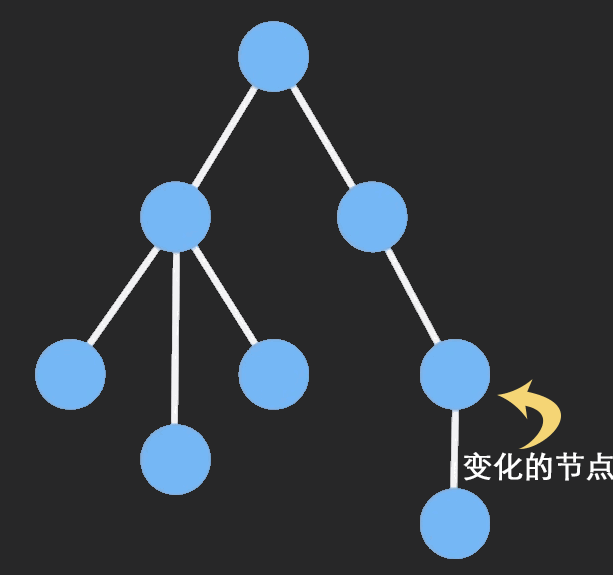
Immutable 則提供了簡(jiǎn)潔高效的判斷數(shù)據(jù)是否變化的方法,只需 === 和 is 比較就能知道是否需要執(zhí)行 render(),而這個(gè)操作幾乎 0 成本,所以可以極大提高性能。修改后的 shouldComponentUpdate 是這樣的:
- import { is } from 'immutable';
- shouldComponentUpdate: (nextProps = {}, nextState = {}) => {
- const thisProps = this.props || {}, thisState = this.state || {};
- if (Object.keys(thisProps).length !== Object.keys(nextProps).length ||
- Object.keys(thisState).length !== Object.keys(nextState).length) {
- return true;
- }
- for (const key in nextProps) {
- if (!is(thisProps[key], nextProps[key])) {
- return true;
- }
- }
- for (const key in nextState) {
- if (thisState[key] !== nextState[key] || !is(thisState[key], nextState[key])) {
- return true;
- }
- }
- return false;
- }
- react-immutable-render-mixin
這是一個(gè)facebook/immutable-js的react pure render mixin 的庫(kù),可以簡(jiǎn)化很多寫(xiě)法。
使用react-immutable-render-mixin可以實(shí)現(xiàn)裝飾器的寫(xiě)法。
- import React from 'react';
- import { immutableRenderDecorator } from 'react-immutable-render-mixin';
- @immutableRenderDecorator
- class Test extends React.Component {
- render() {
- return <div></div>;
- }
- }
無(wú)狀態(tài)組件
為了避免一定程度的浪費(fèi),react官方還在0.14版本中加入了無(wú)狀態(tài)組件,如下:
- // es6
- const HelloMessage = (props) => <div>Hello {props.name}</div>;
高階組件(接下來(lái)的方向)
大部分使用mixin和class extends的地方,高階組件都是更好的方案——畢竟
組合優(yōu)于繼承。
參考文章
使用ES6編寫(xiě)React應(yīng)用(4):使用高階組件替代Mixins
Mixin 已死,Composition 萬(wàn)歲
React同構(gòu)直出(接下來(lái)方向)
同構(gòu)基于服務(wù)端渲染,卻不止是服務(wù)端渲染。
React在減少重復(fù)渲染方面確實(shí)是有一套獨(dú)特的處理辦法,那就是virtual DOM,但顯示在首次渲染的時(shí)候React絕無(wú)可能超越原生的速度。因此,我們?cè)谧鰞?yōu)化的時(shí)候,接下來(lái)可以做的事情就是:
首屏?xí)r間可能會(huì)比較原生的慢一些,但可以嘗試用React Server Render (又稱Isomorphic)去提高效率


































